Webb Air Force Base
| Webb Air Force Base Big Spring Army Airfield  | |
|---|---|
| Part of Air Training Command (ATC) | |
| Big Spring, Texas, USA | |
|
2006 USGS photo | |
 Webb AFB | |
| Coordinates | 32°13′05″N 101°31′17″W / 32.21806°N 101.52139°WCoordinates: 32°13′05″N 101°31′17″W / 32.21806°N 101.52139°W |
| Type | Air Force Base |
| Site information | |
| Controlled by | United States Air Force |
| Site history | |
| Built | 1942 |
| In use | Open 1942 – closed 1977 |
Webb Air Force Base (IATA: BGS[1]), previously named Big Spring Air Force Base, was a United States Air Force facility of the Air Training Command that operated from 1951 to 1977 in West Texas within the current city limits of Big Spring. Webb AFB was a major undergraduate pilot training (UPT) facility for the Air Force, and by 1969, almost 9,000 pilots had been trained at Webb. The last operational wing at Webb AFB was the 78th Flying Training Wing.
History
World War II

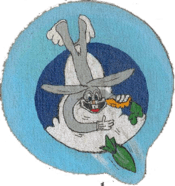
The facility first was used by the United States Army Air Forces as Big Spring Army Air Field, opening on 28 April 1942 as part of the Central Flying Training Command.
Activated on 26 June 1942, the mission of Big Spring AAF was to train aviation cadets in high-altitude precision bombing as bombardiers. It was one of the "West Texas Bombardier Quadrangle" schools of the Army Air Forces Training Command. The other bases in the quad were Midland Army Airfield, San Angelo Army Airfield, and Childress Army Airfield.[2]
Construction of the Army Air Forces Bombardier School began on 15 May 1942, and the airfield received its first class of cadets (118 men) on 16 September 1942. The 79th Bombardier Training Group[3] was the USAAF instructional unit at Big Spring AAF; the 365th Base Hq and Air Base Squadron maintained the station and commanded the ground support units. Operational squadrons under the 78th BTG were:
- 812nd Bombardier Training Squadron
- 815th Bombardier Training Squadron
- 816th Bombardier Training Squadron
- 817th Bombardier Training Squadron
The AT-11 (Beechcraft Model 18 and the B-18 Bolo were the primary aircraft flown for training. After an intense three-month course, the class graduated, exactly one year and ten days after the Japanese bombed Pearl Harbor. Beginning in 1943, the 78th also trained Free French cadets. Many of the young men who trained at the school went on to fly combat missions in the B-17 Flying Fortress, B-24 Liberator, B-25 Mitchell, B-26 Marauder, or B-29 Superfortress, in all combat theaters of World War II.
The 78th HTG was replaced on 1 May 1944 by the 2509th AAF Base Unit (Bombardier School) which was activated to replace the separate air and ground units. The 2509th AAFBU managed training and all ground support units at the base until after the end of the war. It continued operations until the surrender of Japan, when the cadets who agreed to remain in postwar service were transferred to Midland AAF, Texas. The 42nd class of cadets to finish the school completed the course of training and received the silver wings of bombardiers on 26 September 1945, and the airfield was inactivated on 30 November 1945.
At that time, nearly 6,000 students had graduated, and the field's training aircraft had flown about 400,000 hours and more than 60 million miles. Over 1,200,000 practice bombs had been released on nearby bombing ranges. While engaged in this huge training program and under wartime conditions, only four fatal accidents occurred.
The base was declared surplus and was turned over to the War Assets Administration after being closed. It eventually reverted to city control,[4] and it served as the Big Spring Municipal Airport for six years.
Cold War
The airfield was reactivated as Big Spring Air Force Base on 1 October 1951 by the United States Air Force for the Air Training Command (ATC) which established the 3560th Pilot Training Wing (Advanced Single-Engine). However, the command was not formally able to operationally activate the base until 1 January 1952 because the City of Big Spring had difficulty acquiring clear title to some of the property it intended to transfer to ATC
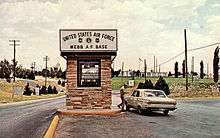
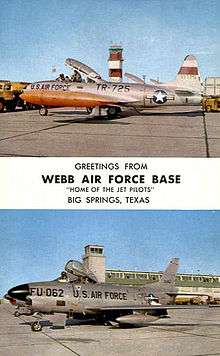
The facility was brought back into service as a primary training installation because of the Korean War and the need for additional pilots. Four months later, on 18 May 1952, ATC changed the name of Big Spring Webb Air Force Base to memorialize 1st Lieutenant James L. Webb, a Big Spring native and World War II combat pilot in Europe, who was killed in a mishap off the Japanese coast flying a P-51 Mustang in 1949 during a training mission.[5]
Instruction of the first class began in April 1952. The initial mission of the 3560th PTW was basic, single-engine flight training. The wing was equipped with 37 T-28 Trojan propeller and 28 T-33 Shooting Star jet trainers.[5] The base population soon passed 2,000. With the end of the Korean War, in 1954 ATC reduced its basic single-engine pilot schools from seven to five, this saw the number of students at Webb remain basically the same as the number of new pilots needed was reduced. The propeller-driven T-28 was phased out in 1956 and converted all training to the jet-powered T-33.
In 1956, the Air Defense Command's 331st Fighter-Interceptor Squadron was transferred to Webb AGB from Stewart AFB, New York to defend the southern United States border on air intercept missions as part of the Central Air Defense Force. Originally flying the F-86D Sabre, the squadron upgraded to the F-102 Delta Dagger in 1960, then transitioned to the F-104 Starfighter in 1963.[6][7] In March 1967, the 331st was redesignated the 4760th Combat Crew Training Squadron and charged with training Royal Jordanian Air Force students on F-104s.[8] It was inactivated on 1 October 1967 when the Jordanians were recalled because of the war with Israel in the summer of 1967.[9]
By 1960, the consolidated pilot training program meant the consolidation of preflight, primary, and basic instruction into one school. In the early 1960s, with the introduction of the T-41 propeller aircraft and the T-37 and T-38 jet training aircraft, Webb became one of ATC's principal Undergraduate Pilot Training bases. By the end of 1968, almost 9,000 pilots had been trained at Webb.
The Air Force established a standard wing structure—a dual deputy concept—in 1963. While there was some reluctance in ATC to implement such a system, in July, the 3560th Pilot Training Wing had a Deputy Commander for Operations, a Deputy Commander for Materiel, an air base group, and a medical function. In early August, ATC replaced the Deputy Commander for Operations with a Deputy Commander for Training. The separate 3560th Pilot Training Group was inactivated in 1963, putting all flying training squadrons directly under Wing command. In 1965, the US government escalated American military involvement in Vietnam. Initially, this had little effect at Webb; however, ATC decided to replace its 55-week, 252 flying-hour training program with a new course. Known as the 30/90/120-Hour Program, the new class was 53 weeks long and included 240 flying hours (30 conventional and 210 jet). Class 67-A was the first to enter the new program, beginning on 29 July. The main difference between the previous UPT program and the 30/90/120 program was the addition of a light plane phase, in which civilian contractors provided 27 days of instruction and 30 hours of flying in the T-41. To provide flying hours for the T-41, ATC reduced the primary phase to 90 hours and left the basic phase unchanged at 120 hours.
In 1968, ATC established a single phase-pilot training squadron concept at Webb; all T-37 instruction was provided by one specialized squadron, and all T-38 training was conducted by the other. This reorganization did not affect T-41 training. Webb was also the site of several annual summer Field Training encampments for college Air Force Reserve Officers Training Corps (AFROTC) cadets throughout the 1950s and most of the 1960s.


In its continuing effort to cut costs, ATC made some major changes in the undergraduate pilot training program. Air Training Command reduced UPT in July 1970 from 53 to 48 weeks and lowered the number of flying hours each student received from 240 to 208.5. The 240-hour program had consisted of 30 hours in a light plane and 210 hours in jets. In the shorter program, student pilots received 16 flying hours in a light plane and only 192.5 hours in jet trainers. In 1972, to preserve the illustrious lineage and histories of combat units, the Air Force directed ATC to replace its four-digit flying and pilot training wings with two-digit and three-digit designations. The command inactivated the four-digit units and activated two-digit and three-digit wings. At Webb, the 3560th Pilot Training Wing was redesignated the 78th Flying Training Wing (78 FTW) on 1 December.
In August 1972, ATC established a pilot instructor training (PIT) course for Vietnamese Air Force (VNAF) instructors at Webb AFB. The course began in August 1972 and students received 170 hours in the T-37. The special T-37 course was especially useful for pilots who were preparing to fly the A-37, an attack version of the T-37, developed in response to counterinsurgency requirements in Vietnam. In addition, T-38 instruction was provided, as this course was particularly appropriate for the Vietnamese Air Force, which had the F-5, a single-seat combat version of the T-38. The last Vietnamese students graduated from this course in April 1975.
Perhaps the most dominant feature on the ATC landscape in 1974 was the serious jet fuel shortage the command had to contend with for much of the year. The shortage arose when the Organization of Petroleum Exporting Countries (OPEC) sent oil prices skyrocketing by cutting back on production in response to the United States' support for Israel during the 1973 Yom Kippur War. Almost overnight, the price of aviation fuel tripled. To conserve fuel, ATC made numerous adjustments to the UPT syllabus at Webb, including a reduction in the number of sorties and flying hours and an increased reliance on the use of synthetic trainers.
In other efforts to cope with the crisis, the Air Force cut overall pilot production goals by 18 percent, USAF Officer Training School (OTS) did not accept any pilot applicants for FY 75, 76 or 77, and the Air Force Reserve Officer Training Corps (AFROTC) initiated a Reduction in Force (RIF) program, rescinding previously promised pilot training and navigator training slots for approximately 75% of the AFROTC cadets in commissioning Year Groups 75, 76 and 77 originally slated for flight training, re-directing them into non-aeronautically rated career fields or offering them opportunities to resign and transfer to officer flight training programs of the Navy, Marine Corps, Coast Guard or Army. Unaffected by the reductions, USAF Academy (USAFA) cadets/graduates of the same period continued to maintain their guaranteed allotment of approximately 75% of USAFA graduates assigned to undergraduate pilot training, 15% assigned to undergraduate navigator training, and the remaining 10% assigned to non-flying duties.
Closure
By the mid-1970s, the end of the Vietnam War, the associated financial costs of that conflict and related cuts in USAF force structure and future defense budgets meant a marked decrease in the need for Air Force pilots. One of the major issues facing the ATC commander and his staff during 1976 was the prospect of closing two UPT bases. Rather than reduce training production at all seven locations, ATC officials believed it to be more economical to close two bases. So it was on 11 March 1976 that the Secretary of the Air Force proposed closing several military installations, to include UPT bases Craig AFB, Alabama and Webb AFB, Texas.
At Webb AFB, the last two pilot training classes completed course work on 30 August 1977, and fixed wing qualification training ended on 1 September 1977. Air Training Command inactivated the 78th Flying Training Wing at Webb AFB on 30 September 1977, although the 78 FTW was subsequently reactivated as the 78th Air Base Wing (78 ABW) at Robins AFB, Georgia, a role it continues in today. The two installations, Webb and Craig were placed in caretaker status the following day. The training previously provided by Webb AFB was moved to Sheppard AFB, Texas, where the first class began on 30 June in what would eventually become Euro-NATO Joint Jet Pilot Training (ENJJPT).
Webb AFB was turned over to the General Services Agency for disposal on 1 January 1978 and the property later turned over to the Big Spring Industrial Park.
The airfield and flight line was converted to an uncontrolled/UNICOM-only general aviation airport renamed Big Spring McMahon-Wrinkle Airport, serving the City of Big Spring. In addition, three units of the Big Spring Correctional Center (a federal prison privately operated by Cornell Companies) are located on the base grounds (as well as FCI Big Spring, which is a separate facility and operated directly by the Federal Bureau of Prisons).
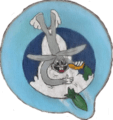 Emblem of the AAF Bombardier School Big Spring AAF
Emblem of the AAF Bombardier School Big Spring AAF 3560th Pilot Training Wing
3560th Pilot Training Wing 331st Fighter-Interceptor Squadron
331st Fighter-Interceptor Squadron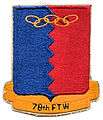 78th Flying Training Wing
78th Flying Training Wing
See also
References
![]() This article incorporates public domain material from the Air Force Historical Research Agency website http://www.afhra.af.mil/.
This article incorporates public domain material from the Air Force Historical Research Agency website http://www.afhra.af.mil/.
External links
| Wikimedia Commons has media related to Webb Air Force Base. |
| Wikimedia Commons has media related to Big Spring Army Airfield. |
- Big Spring Flying School Class 43-06, Big Spring Flying School Yearbook
- Through the Crosshairs Class 43-11, Advanced Bombardier School, Big Spring, Texas Yearbook
- Gyro, The Class 43-18, Big Spring Army Air Field Yearbook
- Webb Air Force Base from the Handbook of Texas Online
- Photos of pilot training at Webb AFB in 1953, History of the 45th Fighter Squadron.
- Hangar 25 Air Museum official website


